The Philippines is an archipelago of over 7‚000 islands‚ known for its stunning beaches‚ lush landscapes‚ and vibrant culture․ Its diverse heritage and warm hospitality make it a captivating destination for travelers․
Overview
The Philippines is a captivating archipelago of over 7‚000 islands‚ offering a rich blend of natural beauty‚ vibrant culture‚ and warm hospitality․ Known for its stunning beaches‚ lush landscapes‚ and diverse wildlife‚ the country attracts travelers seeking adventure and relaxation․ Its strategic location in Southeast Asia makes it a gateway to exploring the region’s unique heritage․ The Philippines is home to UNESCO World Heritage sites‚ vibrant festivals‚ and a mix of indigenous and colonial influences․ With its welcoming locals and diverse experiences‚ the Philippines is a must-visit destination for any traveler․ Whether you’re exploring bustling cities‚ island-hopping‚ or discovering hidden gems‚ the Philippines promises unforgettable memories․ Its unique charm lies in its ability to blend tradition with modernity‚ creating a truly distinctive travel experience․
Geography
The Philippines is an archipelago located in Southeast Asia‚ comprising over 7‚000 islands․ Its strategic position between the Pacific Ocean and the South China Sea makes it a gateway to diverse marine ecosystems․ The largest islands‚ Luzon‚ Mindanao‚ and the Visayas‚ are home to lush rainforests‚ active volcanoes‚ and picturesque landscapes․ Mayon Volcano‚ known for its perfect cone‚ is a notable landmark․ The Chocolate Hills in Bohol and the stunning beaches of Palawan highlight the country’s geological diversity․ The Philippines’ terrain is both mountainous and coastal‚ offering opportunities for outdoor adventures like hiking‚ diving‚ and island-hopping․ Its tropical climate supports rich biodiversity‚ making it a haven for nature enthusiasts․ The archipelago’s unique geography creates a variety of ecosystems‚ from coral reefs to volcanic peaks‚ showcasing its natural beauty and ecological significance․
Climate
The Philippines has a tropical marine climate‚ characterized by high humidity and significant rainfall throughout the year․ The country experiences two main seasons: the dry season (December to May) and the wet season (June to November)․ The dry season is further divided into the cool dry season (December to February) and the hot dry season (March to May)․ The wet season brings heavy rainfall and occasional typhoons‚ which can impact travel plans․ Regional variations exist‚ with some areas like Mindanao experiencing a shorter wet season compared to Luzon and the Visayas․ The climate supports lush vegetation and vibrant ecosystems‚ making the Philippines a biodiversity hotspot․ Understanding the seasonal patterns is essential for planning trips‚ as weather conditions can affect island-hopping‚ hiking‚ and outdoor activities․ The warm temperatures and tropical climate make the Philippines a year-round destination for beachgoers and adventure seekers․
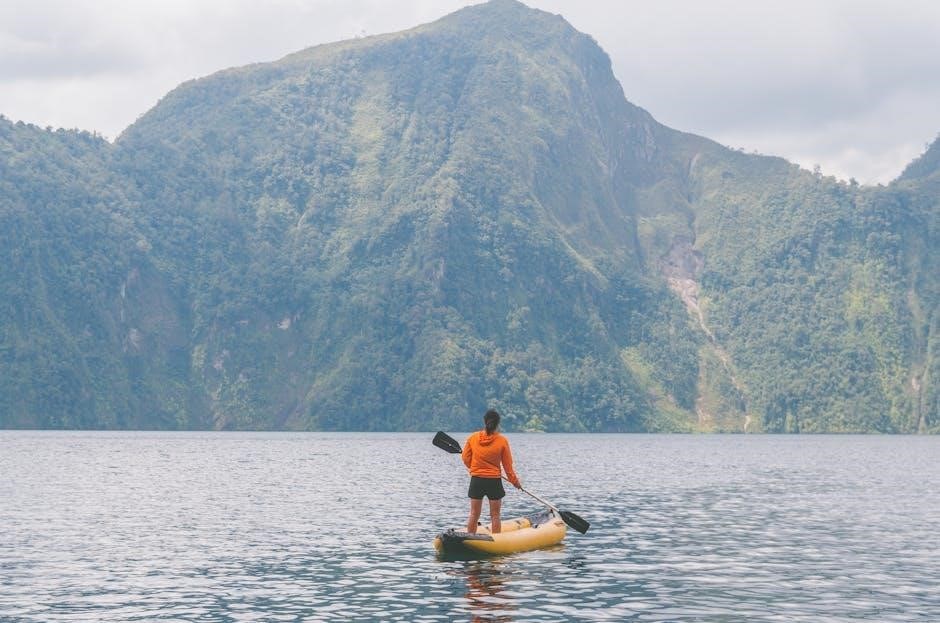
Best Time to Visit
The best time to visit the Philippines is during the dry season‚ from December to May‚ when weather conditions are ideal for island-hopping and outdoor activities․
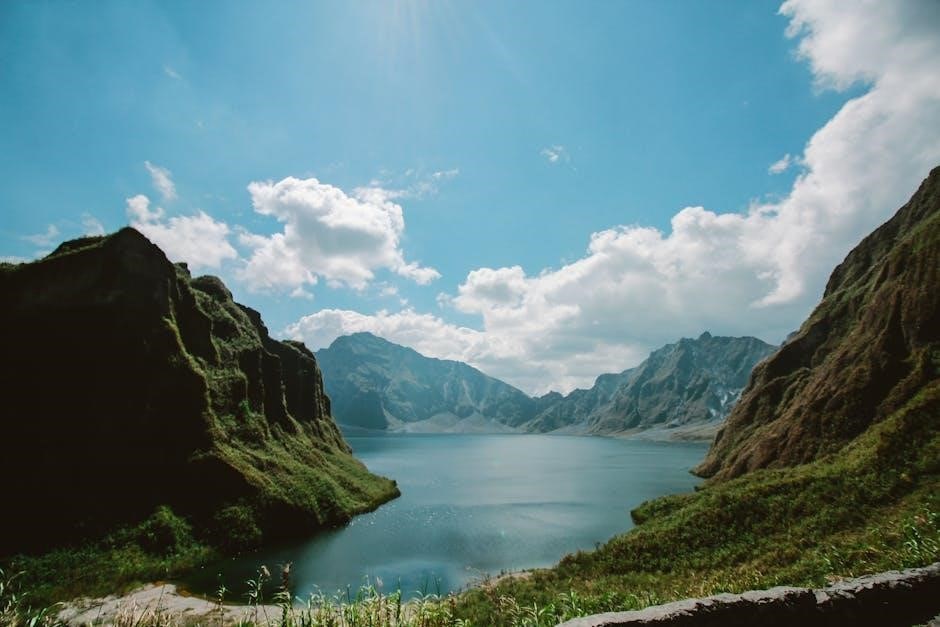
Seasonal Breakdown
The Philippines experiences two main seasons: the dry season (December to May) and the wet season (June to November)․ The dry season is further divided into the cool months (December to February) and the hot months (March to May)․ The wet season is characterized by frequent rains‚ with the heaviest downpours typically occurring between July and September․ The best time to visit is during the dry season‚ especially from December to May‚ when the weather is ideal for beach activities‚ hiking‚ and exploring the islands․ June to November can still be a good time to travel if you plan around the rains․ The shoulder months of November and June often offer a balance of fewer crowds and manageable weather․ Plan your trip according to your preferences for outdoor adventures or cultural experiences․ Always check local weather forecasts before heading out‚ especially during the wet season․ Proper planning ensures a smooth and enjoyable journey․
Regional Variations
The Philippines’ climate varies across its regions due to geographical diversity․ Northern Luzon experiences cooler temperatures‚ especially in mountainous areas like Baguio‚ while southern regions like Mindanao tend to be drier․ The Visayas region‚ including Cebu and Bohol‚ has a more balanced climate․ Palawan and other western islands are prone to monsoon rains‚ while eastern areas like Bicol receive more rainfall․ Coastal regions may face typhoons‚ while inland areas like the Cordillera Mountains have milder weather․ These variations allow travelers to find ideal conditions year-round․ For example‚ Palawan’s dry season aligns with the national dry season‚ making it perfect for island hopping․ Meanwhile‚ Mindanao’s relatively dry climate makes it a great destination during the wet season․ Researching specific regions ensures travelers can plan around local weather patterns and enjoy their trip․ This diversity offers endless opportunities to explore the Philippines’ beauty․ Proper preparation based on regional conditions enhances the travel experience․
Essential Travel Tips
Plan ahead‚ respect local customs‚ and stay informed about safety․ Pack essentials like sunscreen and rain gear․ Embrace local culture and be mindful of environmental conservation․ Enjoy the journey safely․
Before Arrival
Research visa requirements‚ as some nationalities need a visa to enter the Philippines․ Ensure your passport is valid for at least six months․ Book accommodations and flights in advance‚ especially during peak travel seasons․ Check if vaccinations or medications are required‚ as malaria and dengue fever are present in some areas․ Pack essentials like lightweight clothing‚ sunscreen‚ and insect repellent․ Familiarize yourself with local currency‚ the Philippine Peso (PHP)‚ and exchange rates․ Consider purchasing travel insurance for medical and unexpected travel issues․ Stay updated on local regulations and COVID-19 protocols․ Arrange airport transfers or transportation to your destination․ Download useful apps like Grab for rides or Google Translate for communication․ Respect local customs by bringing modest clothing for temple visits․ Inform your bank of international transactions to avoid card issues․ Stay prepared for variable weather conditions with a reusable water bottle and umbrella․ Plan ahead to make your trip seamless and enjoyable․
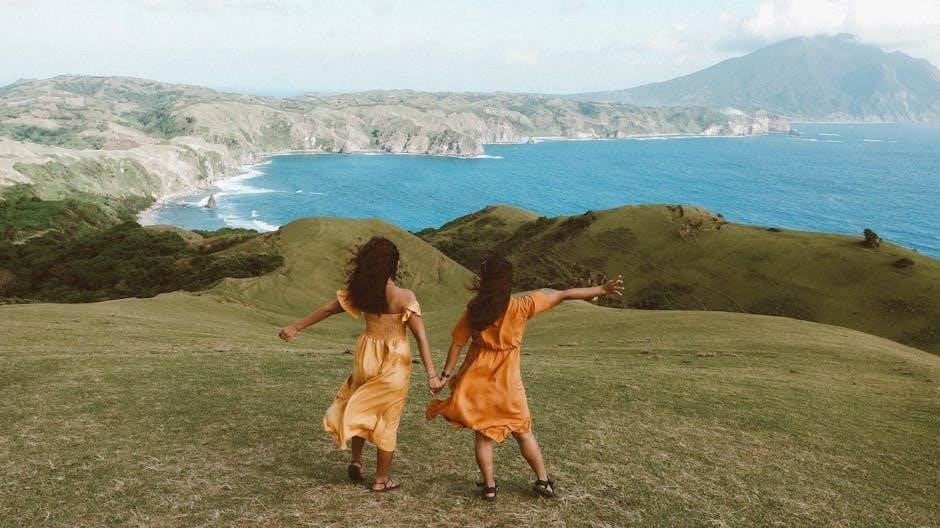
Cultural Dos and Don’ts
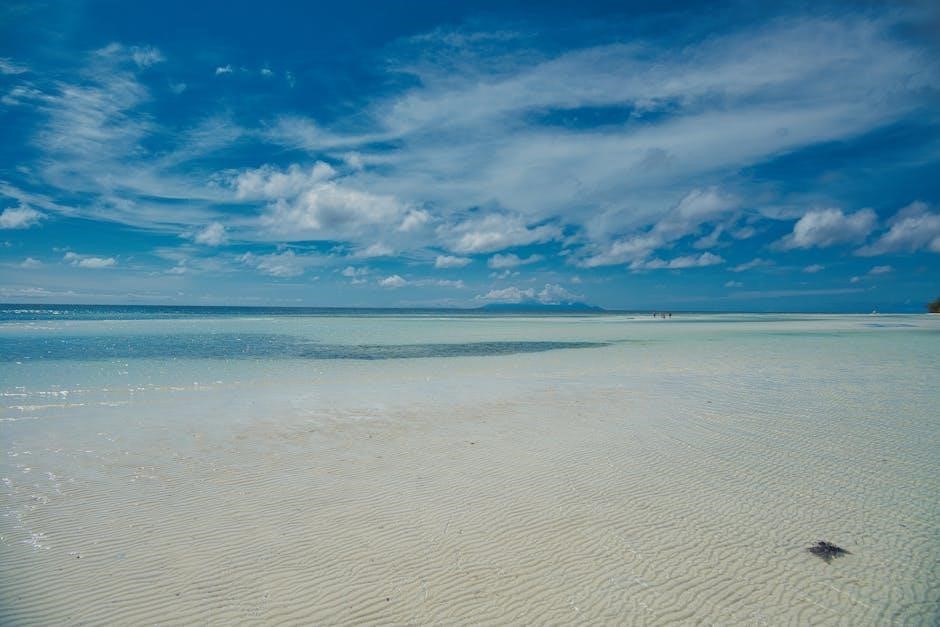
Respect for elders is deeply rooted in Filipino culture․ When greeting older individuals‚ use “po” and “opo” to show politeness․ Remove shoes before entering homes‚ especially in rural areas․ Public displays of affection are generally frowned upon‚ so maintain modesty․ When dining‚ wait for the host to start eating before you begin․ Refrain from leaving your plate empty‚ as it implies the food was insufficient․ Tipping is appreciated but not mandatory in most establishments․ Avoid discussing sensitive topics like politics or religion․ Smile and maintain a friendly demeanor‚ as Filipinos value hospitality․ Respect religious sites by dressing modestly and turning off phones․ Avoid pointing with your feet‚ as it is considered disrespectful․ Learn basic Filipino phrases like “salamat” (thank you) and “mabuhay” (welcome) to connect with locals․ Understanding these customs ensures a respectful and enriching experience in the Philippines․
Health and Safety
When traveling to the Philippines‚ prioritize health and safety to ensure a smooth trip․ Stay hydrated‚ especially in tropical heat‚ and avoid consuming untreated water․ Opt for bottled or filtered water and avoid raw seafood from street vendors․ Mosquito-borne diseases like dengue and Zika are present‚ so use insect repellents and wear protective clothing․ Ensure all vaccinations are up to date before arrival‚ and consult your healthcare provider for recommendations․ Medical facilities in urban areas are adequate‚ but rural regions may lack advanced care․ Secure travel insurance that covers medical emergencies․ Petty theft and pickpocketing can occur in crowded areas‚ so keep valuables secure․ Avoid displaying signs of wealth and use reputable taxi services․ Stay informed about local conditions and avoid traveling at night․ Respect local advice and follow guidelines to ensure a safe and enjoyable journey․
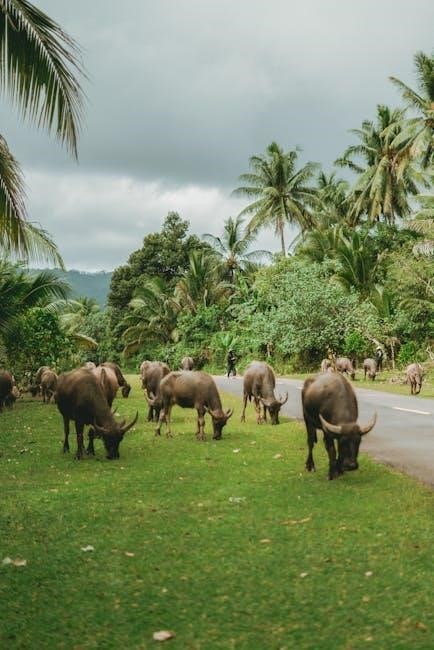
Getting Around
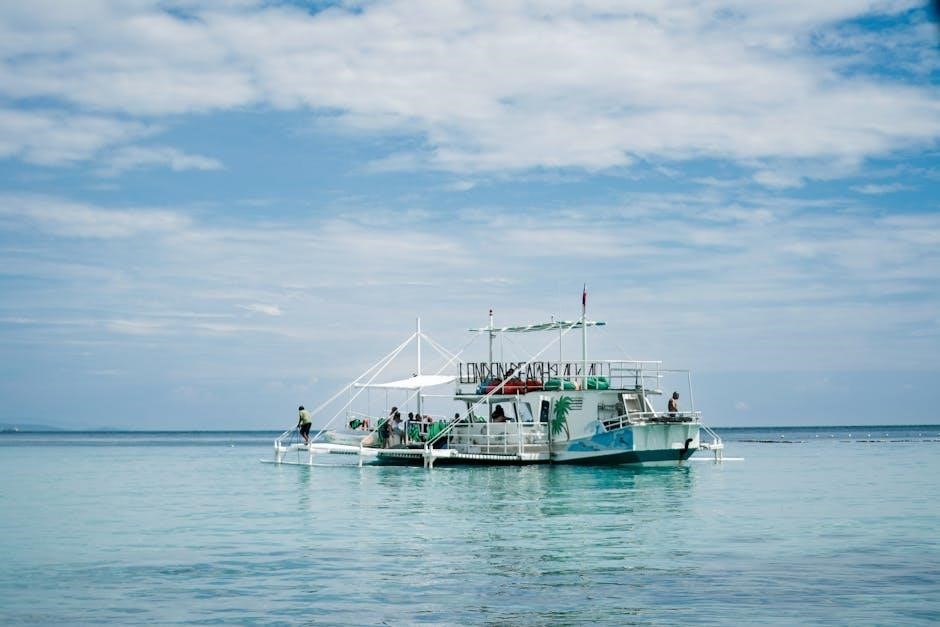
The Philippines offers diverse transport options․ Jeepneys and multicabs are affordable and iconic‚ while tricycles serve local routes․ Taxis and Grab provide convenient city travel‚ blending culture and modernity seamlessly․
Transport Options
The Philippines offers a variety of transport options to suit different budgets and preferences․ Jeepneys and multicabs are colorful‚ affordable‚ and ideal for short distances‚ while taxis and Grab provide door-to-door convenience in cities․ Buses connect major towns and provinces‚ with options ranging from economy to deluxe classes․ The Light Rail Transit (LRT) and Metro Rail Transit (MRT) are efficient for navigating Metro Manila․ For island hopping‚ ferries and bangkas (small boats) are essential․ Domestic flights are a time-saving option for long-distance travel․ Renting cars or motorbikes offers flexibility‚ especially for exploring remote areas․ Tricycles‚ a hybrid of a motorcycle and sidecar‚ are perfect for short‚ local trips․ Additionally‚ services like Angkas (motorcycle taxis) and the Victorina (van shuttles) are popular for their convenience․ Each mode of transport offers a unique experience‚ blending practicality with the vibrant local culture․
Logistics and Planning
Planning your trip to the Philippines requires careful consideration of logistics to ensure a smooth and enjoyable experience․ Start by creating a detailed itinerary based on your interests and travel duration․ Book flights and accommodations in advance‚ especially during peak seasons like December to May․ Research transportation options between destinations‚ as some areas may require advance ferry or flight reservations․ Budgeting is crucial; estimate costs for transportation‚ lodging‚ food‚ and activities․ Pack essentials like lightweight clothing‚ sunscreen‚ and insect repellent․ Additionally‚ ensure you have all necessary documents‚ such as a valid passport‚ visa (if required)‚ and travel insurance․ Familiarize yourself with local customs and health guidelines‚ especially for remote or less touristy areas․ Lastly‚ stay flexible‚ as weather and local conditions can sometimes affect plans․ Proper logistics and planning will help you make the most of your Philippine adventure․
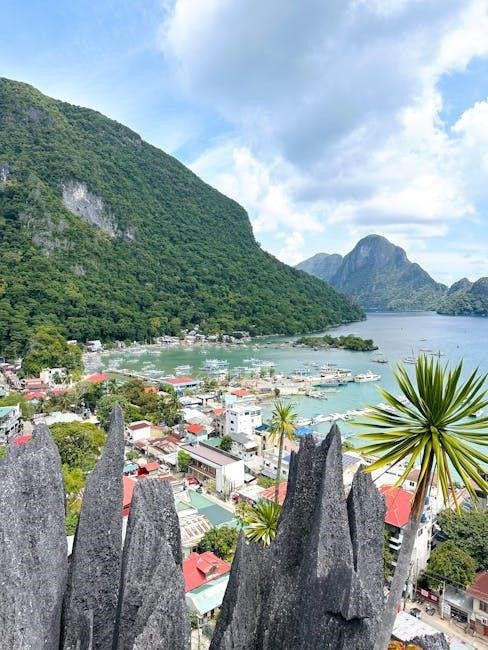
Must-Visit Destinations
The Philippines boasts stunning destinations like Palawan‚ known for its pristine beaches and crystal-clear waters․ Cebu offers a mix of history and adventure‚ while Siargao is a surfer’s paradise․ Boracay and Bohol are also must-visits‚ showcasing the country’s diverse natural beauty and vibrant culture․
Palawan
Palawan is a tropical paradise renowned for its breathtaking landscapes and diverse ecosystems․ El Nido‚ with its towering limestone cliffs and turquoise lagoons‚ is a must-visit‚ offering unforgettable island-hopping experiences․ Coron‚ famous for its WWII shipwrecks‚ attracts divers and snorkelers from around the globe․ The Puerto Princesa Subterranean River‚ a UNESCO World Heritage Site‚ is another highlight‚ showcasing stunning underground natural wonders․ The island’s pristine beaches‚ vibrant coral reefs‚ and lush forests make it a haven for nature lovers and adventure seekers․ Palawan’s unique wildlife‚ including the Philippine crocodile and endemic bird species‚ adds to its ecological significance․ With its warm hospitality and rich culture‚ Palawan is often hailed as one of the world’s most beautiful islands‚ making it an essential destination for any traveler exploring the Philippines․
Mindanao Highlights
Mindanao‚ the southernmost region of the Philippines‚ is a treasure trove of natural wonders‚ cultural richness‚ and historical significance․ Camiguin Island‚ often called the “Island Born of Fire‚” captivates visitors with its volcanic landscapes‚ waterfalls‚ and the iconic Black Sand Beach․ The region is also home to the breathtaking Maria Cristina Falls‚ known as the “Niagara of the Philippines‚” which powers the Agusan River․ Mindanao’s vibrant culture is showcased through its festivals‚ such as the Kaamulan‚ which celebrates the traditions of its indigenous tribes․ The region’s diverse wildlife‚ including the critically endangered Philippine eagle‚ can be spotted in sanctuaries like the Philippine Eagle Center in Davao City․ With its mix of adventure‚ history‚ and natural beauty‚ Mindanao offers a unique and unforgettable experience for travelers exploring the Philippines․
Other Key Locations
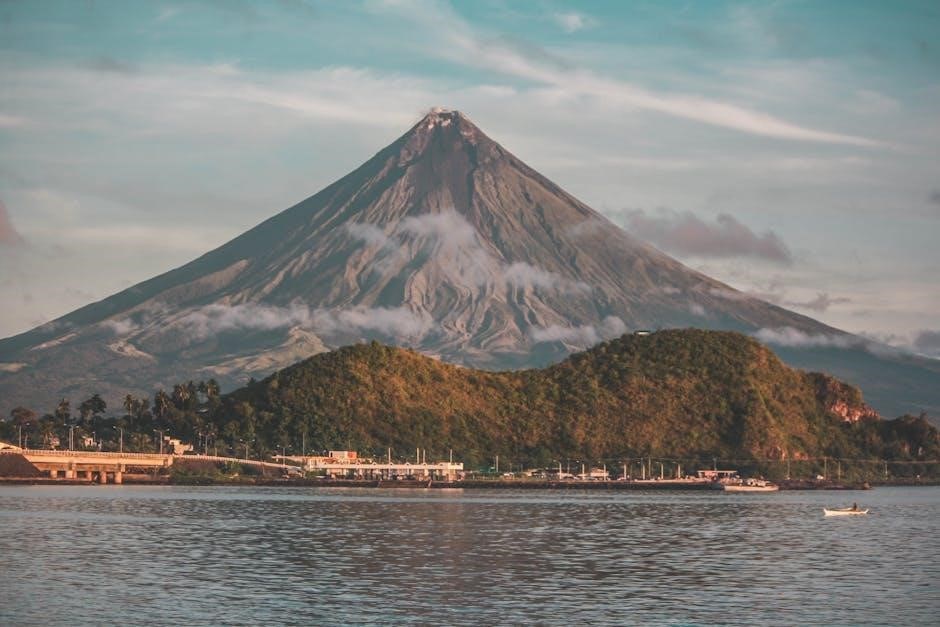
Beyond Palawan and Mindanao‚ the Philippines boasts a variety of captivating destinations․ Vigan‚ a UNESCO World Heritage Site‚ is renowned for its well-preserved Spanish colonial architecture‚ cobblestone streets‚ and historic landmarks like Crisologo Street․ The Chocolate Hills in Bohol‚ with their unique conical shapes‚ offer a breathtaking landscape‚ especially during the dry season when they turn brown․ The Ifugao Rice Terraces‚ another UNESCO site‚ showcase the ingenuity of ancient farming practices and provide stunning views․ Sagada‚ nestled in the Mountain Province‚ is a haven for adventure seekers‚ featuring limestone caves‚ waterfalls‚ and hiking trails․ Lastly‚ Siargao Island‚ known as the “Surfing Capital of the Philippines‚” attracts surfers and beach lovers alike with its crystal-clear waters and vibrant island vibe․ These destinations highlight the Philippines’ diverse natural and cultural beauty․
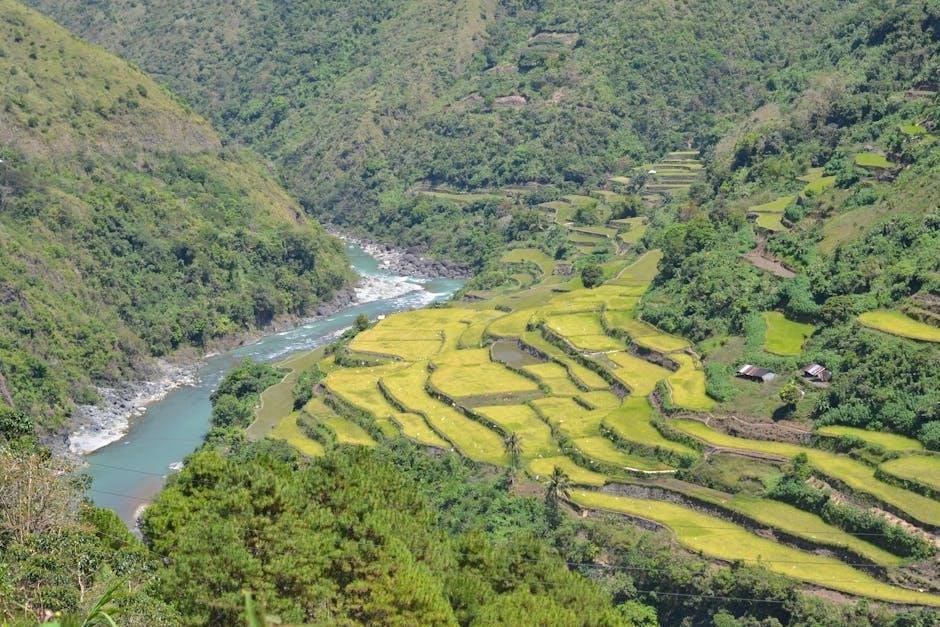
Cultural Experiences
Experience the vibrant culture of the Philippines‚ shaped by Spanish‚ American‚ and Asian influences․ Discover rich traditions‚ delicious cuisine‚ and the famous Filipino hospitality․ Engage in local customs and family values․
Festivals
The Philippines is renowned for its vibrant and colorful festivals‚ which showcase its rich cultural heritage․ These events‚ often held throughout the year‚ reflect the country’s deep religious faith‚ history‚ and traditions․ One of the most famous is the Sinulog Festival in Cebu‚ a grand celebration honoring Santo Niño with elaborate street dances and parades․ Another iconic event is the MassKara Festival in Bacolod‚ known as the “City of Smiles‚” featuring masks‚ street performances‚ and a lively atmosphere․ Festivals like Pahiyas in Lucban‚ where houses are adorned with colorful rice grains and flowers‚ highlight the creativity and craftsmanship of Filipinos․ These celebrations often include music‚ dancing‚ and local cuisine‚ offering visitors a unique glimpse into the country’s soul․ Timing your visit to coincide with these festivals can make your trip even more memorable and culturally enriching․ Remember to respect local customs and join in the joyous spirit of these events․